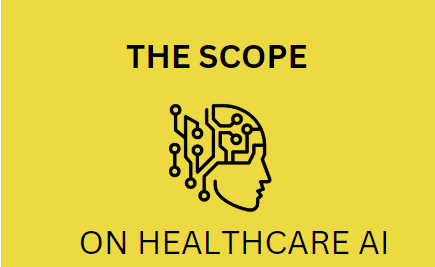Healthcare AI: Patient Experience And The GPT Evolution
Artificial intelligence has been quietly supporting healthcare for decades. In the early 1990s, pioneer researcher Dr. Carol Friedman developed a natural language processor for use in the radiology department at Columbia University Irving Hospital. That same early healthcare AI is at work today in medical coding, HIV research, research literature reviews, and public health initiatives across the country.
AI has similarly been used as pattern recognition technology to aid clinicians in diagnostics from pathology reports, imaging, etc. In each case, it has been put to work as a substantial augmentation on human expertise, but never replacing it. In more simplified terms, AI is not a robotic farmer manually plowing fields for the harvest. It can’t replace expertise, intuition, or hands-on experience. Artificial intelligence is a tractor that the human farmer uses to dramatically impact what the farmer can do. This is why, to some extent, the clinical side of healthcare shrugged its shoulders when a flurry of GPT (generative pre-trained transformer) language processors exploded into the public eye in early 2023. They were a curiosity in that they delivered natural language outputs, unlike the extant, more powerful engines that could draw insights from natural language inputs for experts to then consider and take action on.
The question now is this: can GPT be a new healthcare AI “tractor”?
For starters, the GUI (graphical user interface) upgrades a GPT can offer to a traditional healthcare NLP (natural language processor) or CV (computer vision, basically image recognition) could represent a dramatic quality of life improvement for clinical end-users. Physicians won’t be left just with highlighted text or images and a guessing game, the processor can offer potential conclusions in plain language, as well as several alternatives, ranked from the more obvious to the most puzzling diagnostic “zebra” depending on how the back-end is configured for the two intractably bound metrics of decision-based AI, precision and recall.
Where it gets more complicated, and potentially much more interesting, is GPT’s potential application to patient experiences. The COVID-19 pandemic revolutionized telehealth and patient communication through EMR portals, insurance carrier apps, and boutique providers. In each case, the patient acquired another way to reach out to their care team. By every public health metric, increased access to providers improves outcomes. It’s also a double-edged sword, creating a new, permanent strain on the providers themselves to be accessible and respond in a timely fashion outside of the patient encounter itself.
Enter GPT. If extant NLP technology can have access to basic diagnostic functions, pre-programmed with an adaptable understanding of both how to communicate with people and what sort of complications to watch out for and offer a suggestion beyond the standard, “if this is a medical emergency, please call 911” prompt, the patient and provider experience can improve (something we at The Scope support), by reducing the burden on clinicians and improving patient outcomes with another level of on-call clinical support.
There are complications, though. The first major concern is patient privacy as governed by HIPAA. GPTs continue to train on their inputs, to steadily refine, just like traditional healthcare NLP or image recognizing CVs. To employ one with access to PHI, it would require a shard of the GPT engine itself to be fully sequestered with permanent, exclusive use by a healthcare entity to qualify for the necessary BAA requirement. Additionally, as anyone who has experimented with GPT at an informed level can tell you, their outputs can be questionable. This means a traditional, trained NLP or CV would need to be attached to give “steak” to GPT’s “sizzle.” Even then, it would need to be supervised by trained clinicians (remember, we’re giving a farmer a tractor, not inventing a robot farmer). That said, new technologies create new career paths: it could invent a new midlevel specialty, a clinically trained and licensed remote patient experience provider.
Much like how ambulatory surgery is shaping the cutting edge of recovery times for procedures and improving quality of life for patients and physicians, the impact of healthcare AI needs to be held to the same standard. At the core of healthcare, there is a relationship between the patient and their clinician. In any application of any technology, that needs to be not only preserved, but nurtured to improve the experience for both and continue to drive the care in healthcare.
Recent Posts 
The Critical Partnership Between the Clinical and Business Teams
Healthcare GDP is 9% of US GDP, 4th overall, weighing in at $2.3T. It’s also the largest source of government spending, at 28% of the federal budget (nearly doubling the DoD budget for the largest military in the world). Balancing clinical and quality of care requirements while also dealing with shrinking reimbursements and major consolidation...
Ambulatory Management Solutions Rebrands to Ambulatory Anesthesia Care (AAC)
One of the lynchpins of safe, effective surgery is exceptional anesthesia. Obsessive dedication to quality and dogged pursuit of innovation by groups like Mobile Anesthesiologists in Chicago, Noble Anesthesia Partners in Texas, and M2 Anesthesia, a pediatric dental anesthesia group in the PNW, are all part of a larger ecosystem of success. That success has...
Anesthesiologists Are Essential to Patient Safety
With the growth of ambulatory surgery, there are increased efforts to meet demand. One approach has been changing requirements on physician-anesthesiologists in the OR, including two bills up for consideration in Illinois, both removing the requirements for direct anesthesiologist supervision of CRNAs or other providers when delivering anesthesia (1 and 2). While CRNAs are an...

